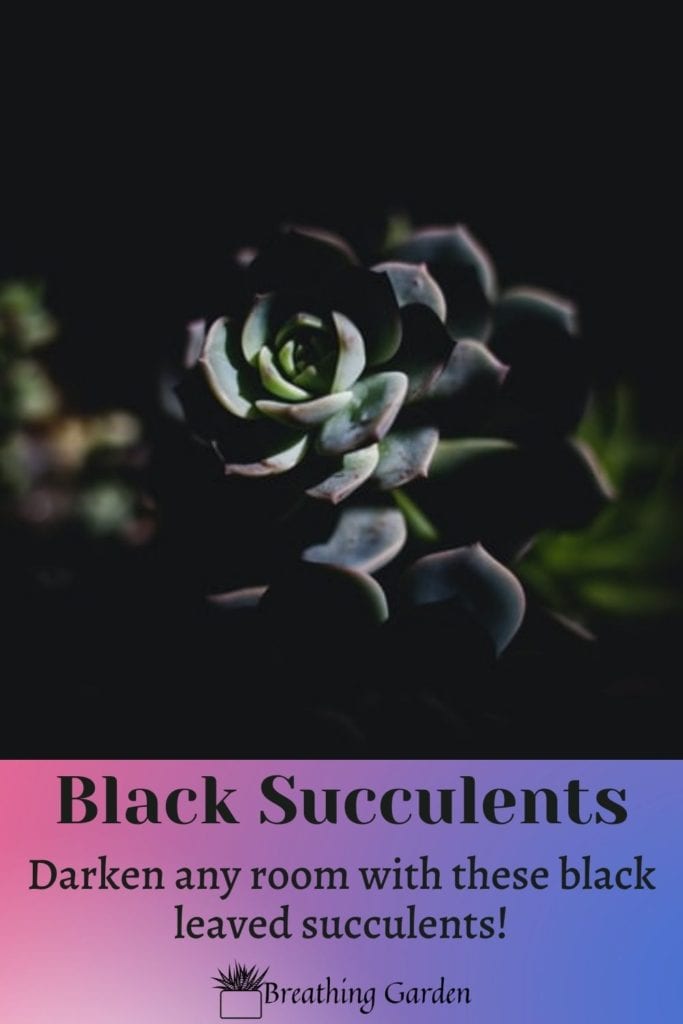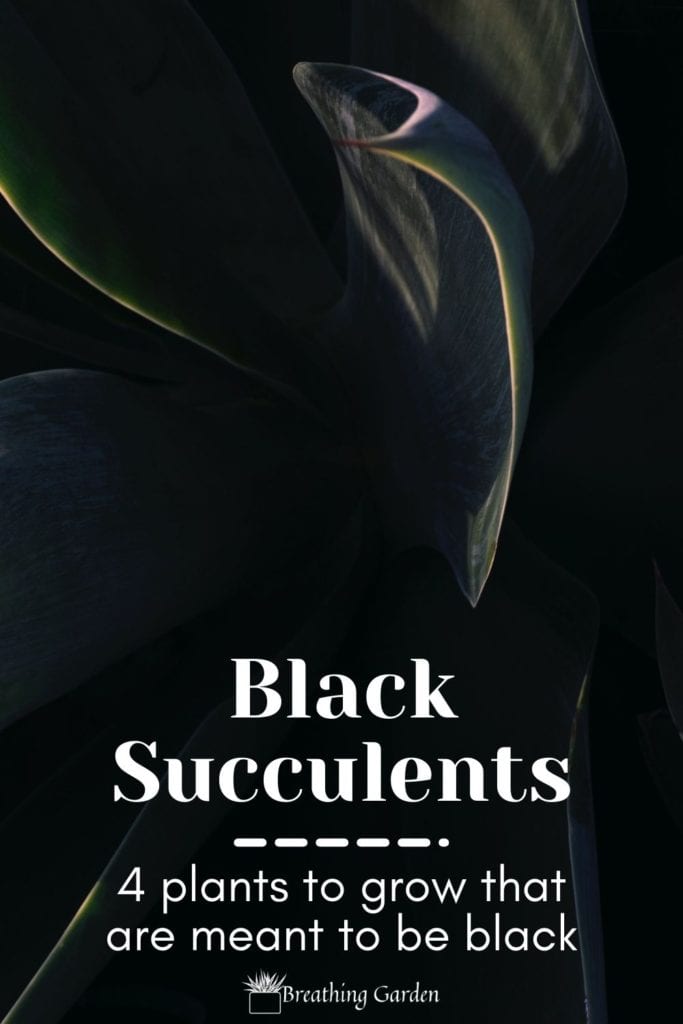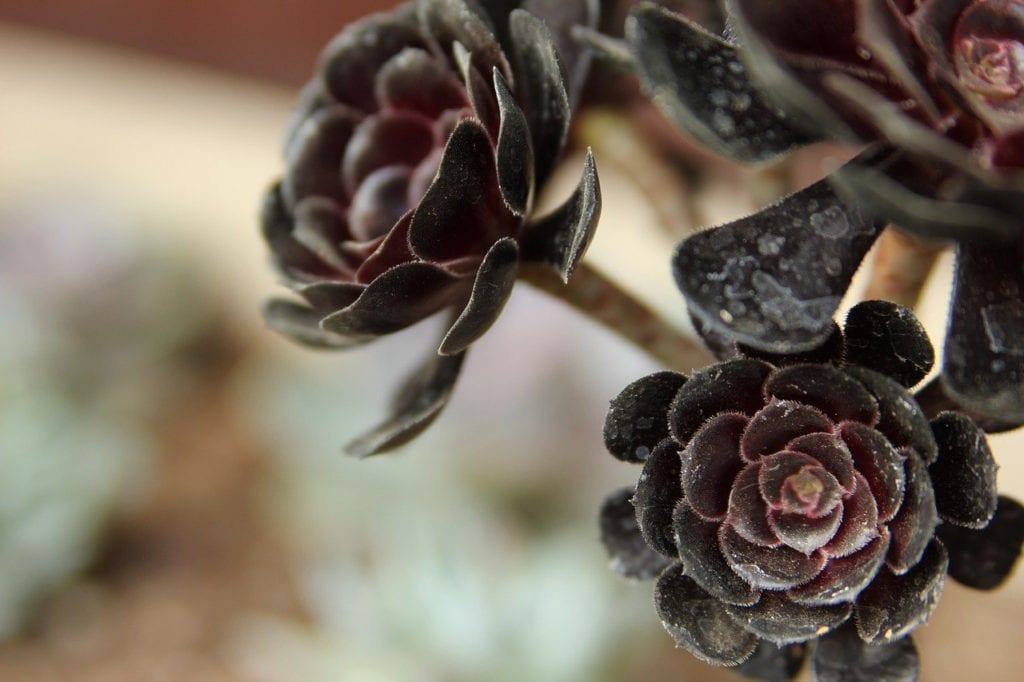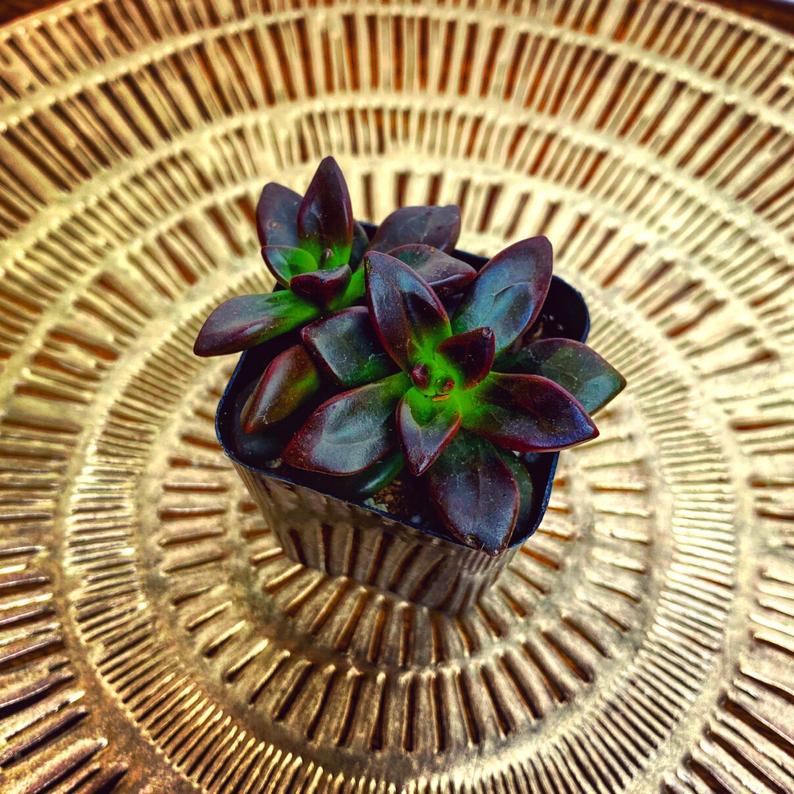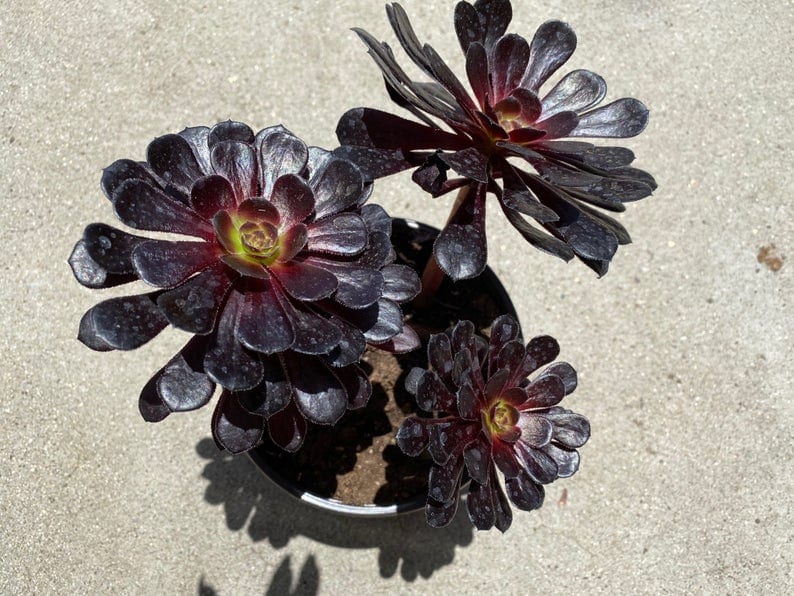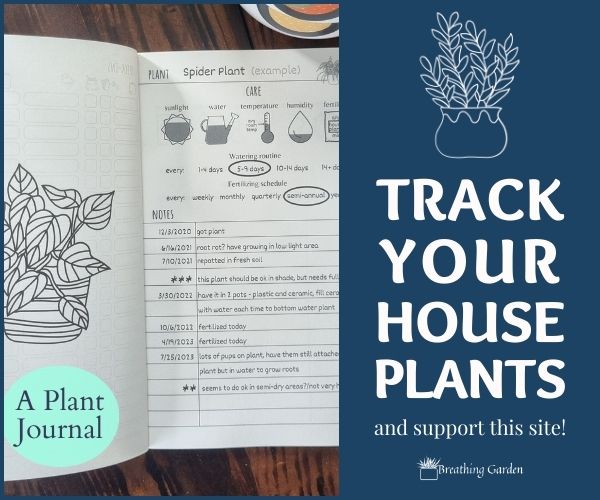Succulents are truly remarkable plants that have grown in popularity through the years. Drought tolerant and hardy, they really don’t need much to survive. Coupled with their unique and sometimes outright alien appearance, they are bound to catch a few stares whether alone or within a fantastic succulent arrangement.
*This post may include affiliate links. When you purchase items from these links, we will receive a small commission, at no extra cost to you, to help support this website. Thank you for your support! Read more ->
While succulents come in maybes shades and hues, black succulents lend an extra powerful, somewhat moody flair wherever you may place them. Grow these 4 black succulents to prove that not all plants have to be green to be alive! Looking for other black houseplants? Read about those here!
Echeveria “Black Prince”
The “Black Prince” Echeveria is an absolute stunning variant of the Echeveria imbricata species. The fleshy dark red to almost black leaves grow in a rosette pattern. These can get to be about 3 inches across, resembling something like a lotus flower.
With a native range spanning from the deserts of Texas to Argentina, this succulent does well in full sun to partial shade and truly thrives best when kept in temperatures between 70 to 80 degrees Fahrenheit. However, as long as the temperature doesn’t get below 40 degrees F, it should be just fine.
Under the right conditions, Black Prince Echeveria will produce reddish black stalks in that will flower, and possibly produce seeds which you could grow for new plants. However, this is not a guarantee.
Like for most succulents, a better propagation method is to cut off a leaf or small part of the plant and place it in some fresh soil. This means you could potentially have a bunch of these plants to give to friends or family or even fill up your home and garden!
Aeonium arboreum “Zwartkop”
This variant of the Aeonium arboreum species may also be referred to as the “Black Beauty” and it isn’t hard to see why. This black succulent can grow into a rather large shrub up to 4 feet tall and 2 feet wide with a mass of rosettes that can reach up to 7 inches across, but if grown in a container, it will grow only as large as the container will allow.
Zwartkop Aeonium are not typically recommended for indoor growth. Their dark red and green leaves can only show off its nearly black color when given at least 6 hours of daily direct sunshine. Aeoniums, by and large, need more water than most other succulents. For best care, it is recommended you soak the soil, allowing it to completely dry between waterings.
As your Aeonium grows, the lower rosettes’ leaves will begin to dry out and fall away. This is perfectly normal. However, if you would like to save these rosettes, you can cut them off of the mother plant and place them in soil or some other growing medium to propagate the plant and create more!
Sempervivum “Black”
Sempervivum “Black” is a varient of sempervivum that appear as tight rosettes composed of green leaves with dark burgundy to almost black tips. In cooler weather, as the seasons shift, the leaves of this plant change color to a deep and dark hue.
Sempervivum go by a few different names. They can be known as the “house leek” and are often affectionately called the Hens & Chicks. This is because as they grow, offshoots will emerge from the main rosette (the “hen”), creating new smaller plants (the “chicks”) that will eventually create their own root system near the mother plant.
These plants will form a dense colony across whatever they are able to take root in. However, you can just as easily cut the newly formed plants from their mother, planting them wherever you choose to spread these plants out.
Mature Sempervivum will grow to be about 6 inches tall and 8 inches across. Like all succulents, they are are incredibly drought tolerant and thrive best in soils mixed with sand or even gravel. Sempervivum in particular enjoy stony surfaces and would be an excellent addition to rock, succulent, or Mediterranean gardens. Their colonies can provide a small area of ground cover, or can even be grown in pots and containers. They are also fairly cold tolerant, so long as it does not drop below freezing.
Haworthia marxii
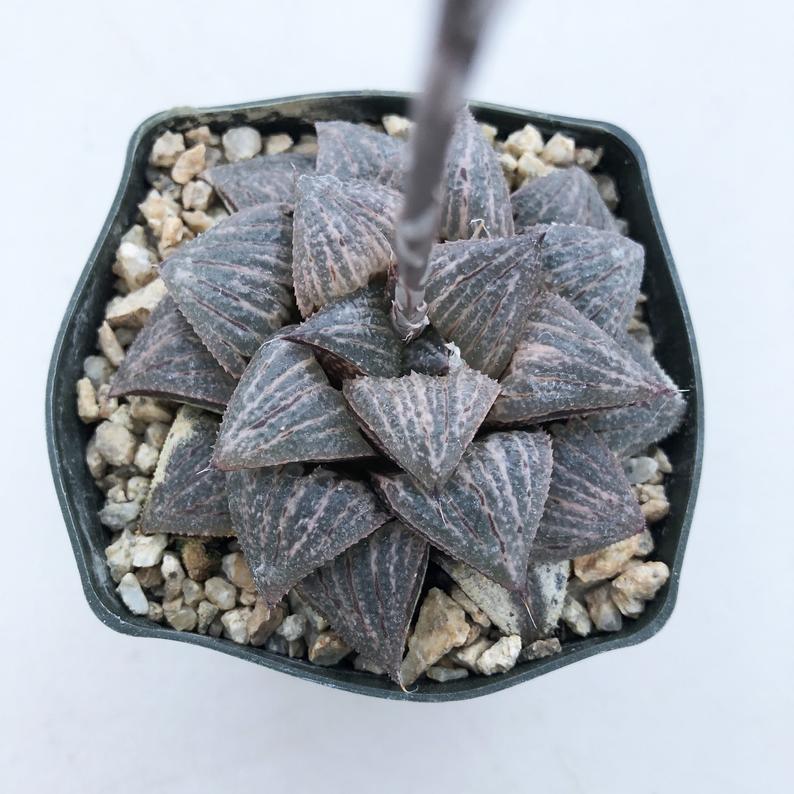
Haworthia marxii is perhaps one of the rarest species of Haworthia cultivated. It is slow growing, and somewhat difficult to propagate. The demand for this plant can often outweigh the supply, so this plant will cost more than the other black succulents on this list. Still, this plant is worth mentioning.
Its fleshy black leaves are extremely plump and feature a pattern similar to that of a fittonia, or nerve plant.
The species is named after Gerhard Marx, a South African artist and amatuer botanist who is best known for his detailed watercolor paintings of succulents and other arid climate dwelling plants.
This Haworthia marxii plant is also a bit higher maintenance, requiring a well draining soil, and water sparingly. This plant also likes airflow, so give this succulent soil that is aerated.
Decided which black succulents to grow? Why not have multiple and create your own gothic garden! Or check out these hanging succulents for a different kind of plant!
Pin It!
Want to keep these plant ideas for later? Save them to Pinterest!

